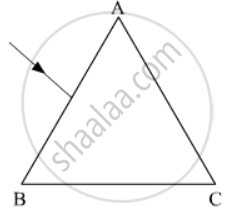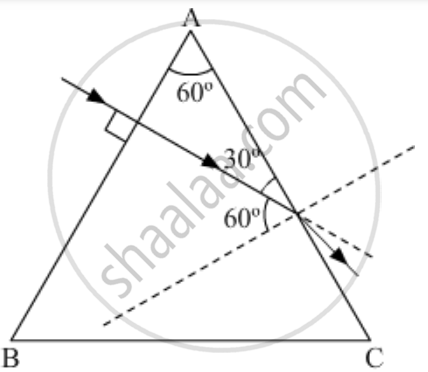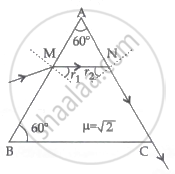Advertisements
Advertisements
प्रश्न
The figure shows a ray of light falling normally on the face AB of an equilateral glass prism having refractive index`3/2`, placed in water of refractive index `4/3`.Will this ray suffer total internal reflection on striking the face AC? Justify your answer.

उत्तर
For total internal reflection to happen at AC face, `sin theta >= mu_"water"/mu_"prism" = "4/3"/"3/2" = 8/9 = 0.89` where, θ is angle of incidence.
Now from the figure, we can see that angle of incidence will be 60 degrees.

So `sin 60 = sqrt3/2 = 0.866` which is less than 0.89
So total internal reflection will not take place at the face AC
APPEARS IN
संबंधित प्रश्न
Name the factors affecting the critical angle for the pair of media.
Plot a graph between
Angle of incidence versus angle of reflection,
Write down the relationship between the critical angle and the refractive index of the medium.
How are critical angles related to the refractive index of the medium?
Choose the correct option.
Select the WRONG statement.
What are the examples of total internal reflection in nature?
A ray of light incident at an angle θ on a refracting face of a prism emerges from the other face normally. If the angle of the prism is 5° and the prism is made of a material of refractive index 1.5, the angle of incidence is ______.
A ray of light passes through a prism of refractive index `sqrt2` as shown in the figure. Find:

- The angle of incidence (∠r2) at face AC.
- The angle of minimum deviation for this prism.
A given ray of light suffers minimum deviation in an equilateral prism P. Additional prism Q and R of identical shape and of the same material as P are now added as shown in the figure. The ray will now suffer ______.

The angle made by incident ray of light with normal of the reflecting surface is called ______.
